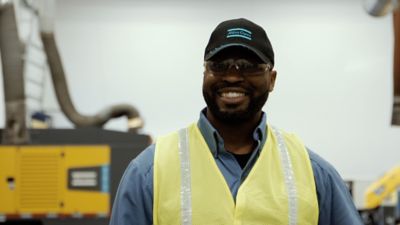The importance of getting gas compressor sizing right
Your guide to gas compressor sizing
Once you have determined that carbon capture is beneficial to you, which it almost certainly is, you have to pick the right compressor. Here, the compressor technology and the gas compressor sizing play the biggest role.
First, let’s look at the technology because it is an easy decision. If you plan to sell the captured CO2, you must choose an oil-free compressor. The reason is that one of the main purchasers of captured CO2 is the beverage industry. Therefore, the compression process should not introduce any new contaminants, in this case oil.
Then there is the matter of gas compressor sizing. This matters because you want to pick a model that can get the job done at any time without oversizing it. Picking a compressor that is too small means you may not achieve the required output. Choosing one that is too large, on the other hand, has two major disadvantages. First, it wastes a lot of energy and therefore money. In addition, a compressor that is too large usually has a shorter lifespan. That is because this compressor starts and stops too often and runs at a non-optimal speed.
The key variables for gas compressor sizing
Properly sizing the compressor is a real challenge as many different variables must be considered.
- The main driver that determines the size of a compressor used for CO2 capturing is the flow. In the case of carbon capture, it is usually not referred to in volumetric terms. Instead, it is expressed in kilos/tons of CO2 per hour. That flow can be quite large, for example in the case of chemical or cement processes.
- The next step is to figure out at what pressure the CO2 is produced. In some processes, the flue gas containing the carbon dioxide is already compressed. In other cases, the CO2 has a very low pressure. That is another factor that helps dictate the compressor’s size and technology.
- A third parameter is the destination of the carbon dioxide, i.e., the required outlet pressure.For example, you only need a pressure of 20-30 bar to liquify the CO2 and then transport it elsewhere. Underground storage, however, requires a much higher outlet pressure of 90-170 bar. While these are the most popular uses for compressed CO2, there are others as well, such as sending it through pipelines. This requires outlet pressures ranging from 10-15 bar for regional pipelines to 70-90 bar if the carbon dioxide has to be transported longer distances.
CO2 compressors or CO2 boosters?
Some of these pressures can be achieved with a compressor while others require multiple compressors or a combination of compressors and boosters.
Atlas Copco is offering all variations; one hand, our screw compressors are a great solution for high flows and low pressure and, on the other, our piston compressors handle high pressures quite easily. With these technologies and the combination of both, it's possible to handle a variety of carbon capture requirements.
It is also important to note that our compressors with variable speed drives (VSD) play a crucial role in carbon capturing. The reason is that they only compress as much CO2 as needed, which makes them a much more efficient solution than fixed-speed compressors.
Since the aforementioned parameters can change. A VSD compressor is valuable in multiple ways. It not only preserves energy (and therefore reduces costs) in regular operation. It is also the ideal solution to adapt to these changing parameters.
Dealing with moisture
Earlier, we mentioned that it is important not to introduce oil into the process. The same also holds true for other contaminants. It’s key to be aware of what is in the gas that is to be compressed to know how to effectively deal with it.
Therefore, it is important to know the desired CO2 quality at the end of the process.
One of the contaminants you have to be mindful of is water. The most common type of carbon dioxide that has to be compressed is so-called “wet CO2,” which means it includes moisture. Knowing this water content is another factor that has to be considered because it can lead to corrosion and it will dictate the materials required for the compressor’s components.
That is why all of Atlas Copco’s compressors for carbon capturing are using stainless steel – just to be on the safe side.
One option to get rid of this water is to dry the CO2 during or after the compression process. Of course, Atlas Copco also has solutions for that.
Consult an expert
As you can see, finding the right compressor technology and properly sizing that compressor is not necessarily easy.
Therefore, we recommend that you gather as much of the aforementioned information as possible. That includes your flow, the required outlet pressure, water content and as much data about the use of the CO2 as possible. If you don’t know them, don’t worry.
Just reach out to us. Our experts will be able to answer all of your questions and can pick out the perfect solution for you.



